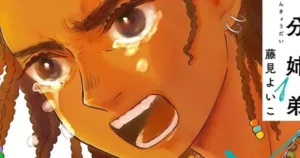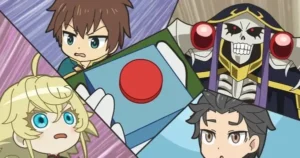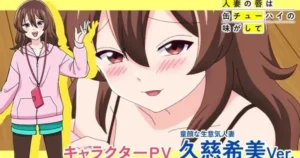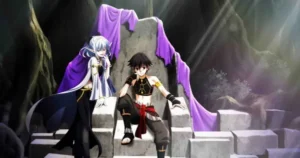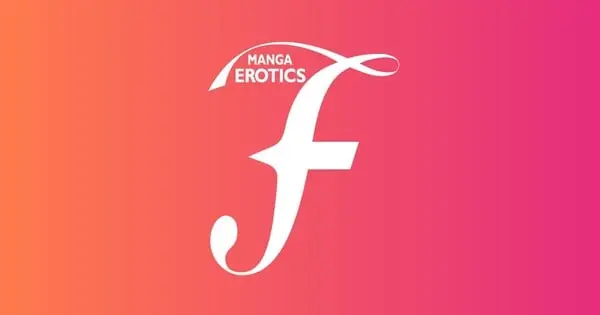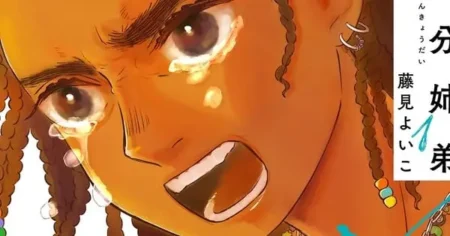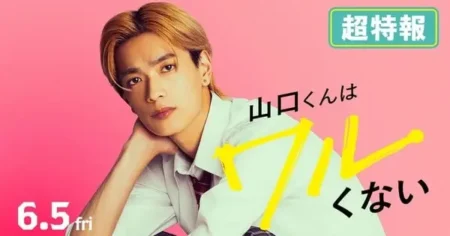Usamaru Furuya, the acclaimed manga artist known for his unique blend of dark fantasy, horror, and surreal humor, is launching a new manga series titled Bokutachi no Shinjū (Our Lovers’ Suicide). The series will premiere on April 9 in the web magazine Manga Erotics F, marking a significant addition to Furuya’s diverse body of work. This event has sparked excitement among fans and critics alike, eager to see what new depths Furuya will explore with this intriguing title.
A New Chapter for Usamaru Furuya
The announcement of Our Lovers’ Suicide has been met with considerable anticipation, given Furuya’s reputation for pushing boundaries and exploring complex themes. Manga Erotics F, the web magazine hosting the new series, is known for showcasing works that express diverse depictions of gender and open explorations of eroticism, making it a fitting platform for Furuya’s creative vision. The magazine emphasizes its commitment to fostering a better societal understanding and acceptance through its content.
Return of Manga Erotics F
The launch of Our Lovers’ Suicide is part of the second phase of the return of Manga Erotics F. The first phase involved launching the website and hosting an archive of over 100 previously serialized titles, including Furuya’s own Lychee Light Club, alongside works by other notable artists such as Asumiko Nakamura and Natsume Ono. This revival signals a renewed focus on providing a platform for diverse and explorative manga.
Who is Usamaru Furuya?
Usamaru Furuya is a highly respected Japanese manga artist and illustrator. Born on January 25, 1968, in Tokyo, Japan, Furuya’s artistic journey began with an early interest in manga. He enrolled in the Osamu Tezuka Manga Correspondence Course during elementary school and later gravitated toward a darker, more underground style in high school.
Educational Background and Early Career
Furuya’s formal art education includes graduating from Tama Art University, where he majored in oil painting. During his time in college, he also developed interests in sculpting and Butoh dance, influencing his unique artistic style. His work evolved from figurative art to more abstract shapes.
Breakthrough and Style
In 1994, Furuya made his debut with the series Palepoli in the alternative manga magazine Garo. This marked the beginning of his career as a professional manga artist. He initially planned to balance his manga work with illustrations, but his success in manga led him to focus primarily on this medium. Furuya’s style is characterized by its versatility, ranging from photorealistic drawing to mascot-like cute characters. He has worked across various manga genres, publishing in both major and underground magazines.
Notable Works
Furuya is best known for his manga Lychee Light Club, a dark and surreal tale that has gained a cult following. Other significant works include No Longer Human, an adaptation of Osamu Dazai’s novel, Genkaku Picasso, 51 Ways to Save Her, and Teiichi no Kuni. His works often explore themes of adolescence, identity, and the darker aspects of human nature.
Themes and Influences in Furuya’s Work
Furuya’s manga often incorporates a blend of humor, surrealism, and dark themes. His stories frequently delve into the complexities of human relationships and societal issues. Christianity is also a recurring motif in his work. Masanao Amano notes that Furuya is known for “taking ordinary everyday situations and adding instantaneous humor or transforming them into a mysterious world that showcases his surrealistic sense.” His work is also influenced by the New Wave movement in manga from the 1980s.
A Look Back at Usamaru Furuya’s Mangaography
To fully appreciate Usamaru Furuya’s latest endeavor, Our Lovers’ Suicide, it is essential to explore his extensive mangaography, which showcases his diverse artistic range and thematic interests.
Palepoli
Palepoli, published in 1994 in the alternative manga magazine Garo, marked Usamaru Furuya’s debut as a manga artist. This four-panel “gag” strip set the stage for his unique blend of humor and avant-garde storytelling.
Short Cuts
Following his debut, Furuya contributed Short Cuts to the mainstream seinen manga magazine Weekly Young Sunday. This series further demonstrated his ability to blend unconventional themes with accessible storytelling.
Lychee Light Club
Lychee Light Club is one of Usamaru Furuya’s most iconic works. Serialized in Manga Erotics F between 2005 and 2006, this dark fantasy horror manga tells the story of a group of middle school boys who aim to build an AI using cruel tactics. Based on a play of the same name, Lychee Light Club has been adapted into a TV anime series, stage plays, and a live-action film, solidifying its place in popular culture.
Bokurano☆Hikari Club (Our Light Club)
Serving as a prequel to Lychee Light Club, Our Light Club explores the earlier years of the characters from the original series. Serialized in Ohta Publishing’s online pocopoco magazine between 2011 and 2012, this manga delves into the pasts of the club members, providing context to their later actions in Lychee Light Club.
No Longer Human
Usamaru Furuya’s adaptation of Osamu Dazai’s No Longer Human is a poignant and visually striking interpretation of the classic novel. This manga delves into the themes of alienation, identity, and the struggle to find meaning in a seemingly indifferent world.
Genkaku Picasso
Genkaku Picasso is another notable work by Furuya, showcasing his ability to blend surreal elements with relatable human experiences. The story follows a high school student who gains the ability to see the emotions of others as visual art.
Lunatic Circus
Lunatic Circus, launched in August 2020, is set in post-WWII Japan and tells the story of the trapeze artists of the “Lunatic Circus.” This manga explores themes of dreams, fears, struggles, and hopes against the backdrop of Japan’s rapid economic growth. The series went on hiatus in 2021.
Other Works
Usamaru Furuya’s extensive mangaography also includes titles such as 51 Ways to Save Her, Teiichi no Kuni, Amane Gymnasium, and The Music of Marie. Each of these works showcases Furuya’s diverse artistic styles and his exploration of complex themes.
Manga Erotics F: A Platform for Diverse Voices
Manga Erotics F, where Our Lovers’ Suicide will be serialized, has a rich history of promoting diverse and explorative manga. Originally launched in 2001 as a merger of the Manga Erotics and Manga F magazines, it quickly became known for its willingness to showcase works that pushed boundaries and explored a wide range of themes.
Focus on Gender and Eroticism
The magazine emphasizes its commitment to providing a platform for works that express diverse depictions of gender and open explorations of eroticism. This focus allows creators to delve into topics that are often overlooked or marginalized in mainstream media.
Notable Contributions
Manga Erotics F has been home to several notable manga series, including Usamaru Furuya’s Lychee Light Club, Asumiko Nakamura’s All about J, and Natsume Ono’s Ristorante Paradiso. These works have contributed to the magazine’s reputation for showcasing high-quality and thought-provoking content.
Reception and Legacy
Usamaru Furuya’s work has received critical acclaim and has garnered a dedicated following both in Japan and internationally. His unique artistic style and his exploration of complex themes have solidified his place as one of the most influential manga artists of his generation. His stories often resonate with readers on a deep emotional level, prompting them to reflect on their own experiences and beliefs.
Adaptations and Influence
Furuya’s works have been adapted into various forms of media, including anime, live-action films, and stage plays. These adaptations have further expanded his reach and have introduced his stories to new audiences. His influence can be seen in the works of other manga artists and in the broader cultural landscape.
Awards and Recognition
While specific awards may not be widely documented, Furuya’s impact on the manga industry is undeniable. His ability to blend genres, challenge conventions, and create visually stunning and emotionally resonant stories has earned him the respect of his peers and the admiration of his fans.
What to Expect from Our Lovers’ Suicide
Given Usamaru Furuya’s track record, Our Lovers’ Suicide is expected to be a thought-provoking and visually striking manga series. The title itself suggests a dark and potentially controversial theme, hinting at a story that will delve into the complexities of love, death, and human relationships.
Potential Themes and Styles
Fans can anticipate Furuya’s signature blend of surrealism, dark humor, and emotional depth. The series may explore themes of identity, societal pressures, and the search for meaning in a seemingly indifferent world. Furuya’s versatile artistic style is likely to be on full display, with potentially both photorealistic and more stylized elements.
Anticipation and Speculation
As the premiere date approaches, fans and critics alike are eagerly speculating about the plot, characters, and overall tone of Our Lovers’ Suicide. The series is poised to be a significant addition to Usamaru Furuya’s body of work and a testament to his continued creativity and innovation. The release of Our Lovers’ Suicide on April 9 is highly anticipated by fans and critics, marking a new chapter in Usamaru Furuya’s career. This latest work promises to continue Furuya’s tradition of exploring complex themes with his signature blend of dark fantasy, horror, and surreal humor.


